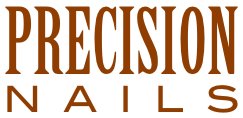Article Published in Stylist Magazine, May 2013
My nail salon doesn’t market to any particular age group, nor do I track clients by age. Some clients proudly announce theirs (especially if they look much younger), and I can roughly estimate the ages of others. So who are we calling “old?” Everyone older than I am? And why does that word have such a negative connotation? Far from being “over the hill” and “past their prime,” my “older” clients lead vibrant, fulfilling lives that many younger people would envy. Marketing to them is essentially marketing to myself, and who I want be 50 years from now, should I live so long and well. Yes, I have clients that old. There’s something both endearing and inspiring about nonagenerians who schedule a year in advance to care for their nails. If everyone could be that mindful, fastidious, optimistic and committed...
Regardless of their age or gender, most of my clients view professional nail care as routine maintenance rather than a frivolous activity or selfish extravagance. Having their nails done isn’t about wearing polish. (Just ask my male clients.) Not every one wears polish; that’s a personal preference, more a beauty “want” than a health “need.” What clients should understand are the potential consequences of neglecting/abusing their natural nails, especially when combined with the aging process and other serious health concerns like diabetes.
I’ve found that the more maintenance clients require, the less capable and/or willing they are to do it themselves. Many come to that realization when they can no longer trim their own toenails. In fact, attempting to trim them could be dangerous without the proper training and tool(s). That’s assuming that clients have the flexibility to reach their feet, and the manual dexterity, hand strength and visual acuity to trim their nails safely. Even if capable, some people will always prefer to have a professional do the work on a regular basis.
Making your services convenient, pleasant and affordable for older clients does take some planning, including the pricing structure. I’ve designed my services to focus on the basics (nail shaping and cuticle conditioning) at a reasonable price, and clients can always choose to expand their service(s) with callus reduction, paraffin, massage, polish/buffing, etc. For example, clients who want only their toenails trimmed choose the Foot Express service ($20/15 minutes). Moreover, during our services, the nails are not just shortened, but smoothed with a single-use, disposable file to avoid a snagging/scratching hazard. This may or may not compare favorably with what a podiatrist would do or charge, but that’s not my concern as long as we work within our scope of practice as licensed manicurists.
As I’ve written previously, accessibility is of particular interest to older clients because mobility decreases with age. By minimizing physical barriers, or eliminating them altogether, the salon can accommodate clients who use canes/walkers/wheelchairs. For clients physically incapable of visiting the salon, whether their limitations may be temporary, like recovering from surgery, or permanent, like being unable to drive or having a terminal illness, I provide services in their homes. Let me emphasize that these appointments are not “home spa parties;” these clients have legitimate reasons why they cannot visit the salon, otherwise I wouldn’t be able to work on them legally. (Before offering services outside your licensed salon, check with your state board and insurance provider to make sure you’re compliant.)
If you fear that your creativity or style will somehow be constrained by older clients, don’t worry. In my experience, older clients rely on me even more than younger ones do to keep them informed of product innovations and color trends. Many of my older clients are more adventurous than I am, and want to be the first to try the trendiest colors.
As a beauty professional who regularly works with older clients, I can assure you it’s very rewarding, both personally and financially. Granted, finding older people where I live isn’t difficult; in fact, they’re hard to avoid. My small town (Carmel, California) has approximately 3700 residents with a median age of 59.2 years. In comparison, the median age statewide is only 35.2 years, according to the 2010 U.S. Census. That age differential represents an entire generation of potential clients, both men and women who could benefit from professional nail care. That’s not to say that all these people would consider having their nails done professionally, but enough of them do to keep my salon very busy.
One of the easiest ways to reach these potential clients in your own community is to volunteer, which is something that many older people do themselves. You may also want to support organizations and causes in which you share mutual interest, like education, health care, animal welfare and the arts. Older clients want to feel valued and relevant. Who doesn’t? Through your expertise, kindness, reliability and personal interaction, you’ll achieve that and much more.
By Jaime Schrabeck, Ph.D.
Welcome to the Precision Nails Blog
As a salon owner and licensed manicurist, my perspective on the nail industry could not be more practical. While some may be offended by the opinions expressed, please understand that I want to share information and stimulate discussion. Whether you want your nails done or do nails professionally, I hope you find this blog both useful and interesting.
Jaime Schrabeck, Ph.D.
Materials on this website may not be reproduced, redistributed, transmitted, copied, cached, or otherwise used, without prior written consent of Jaime Schrabeck. To request consent, contact Jaime at consulting@precisionnails.com.
Jaime Schrabeck, Ph.D.
Saturday, June 8, 2013
Subscribe to:
Post Comments (Atom)





No comments:
Post a Comment